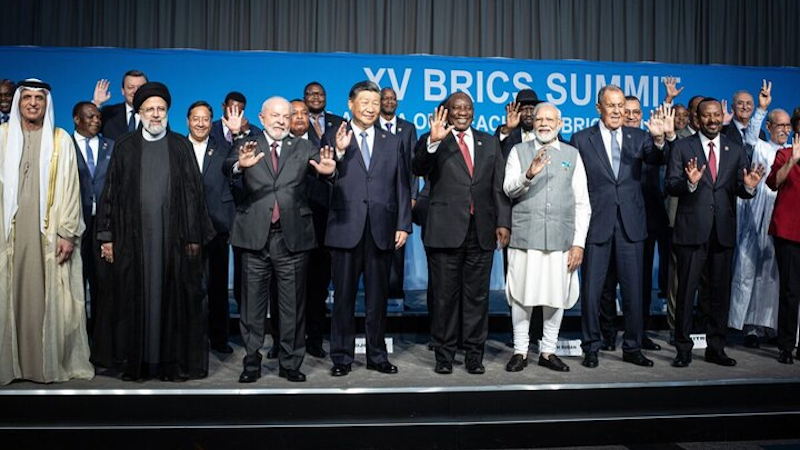The BRICS Bloc Expansion: Implications for U.S. Importers
As the BRICS economic coalition evolves from a five-member group to a more expansive global alliance, U.S. importers are beginning to feel the effects. With the recent inclusion of countries like Saudi Arabia, Egypt, Argentina, the United Arab Emirates, and Iran, the BRICS bloc is becoming a formidable force in global supply and trade flows. This expanded grouping, now rich in energy, raw materials, and manufacturing diversity, signals both opportunities and disruption for American buyers dependent on international sourcing.
What Is BRICS and Why Does It Matter?
BRICS was originally formed as an economic alliance among five major emerging markets: Brazil, Russia, India, China, and South Africa. Together, they represent a significant share of global GDP and population. The bloc was created to enhance cooperation in finance, trade, and development outside of Western-dominated institutions like the IMF and World Bank.
The expansion of BRICS is more than symbolic—it’s a restructuring of global economic gravity. This realignment challenges existing trade networks and presents strategic decisions for U.S. importers.
Currency Diversification and Dollar Risk
One of the most significant developments associated with BRICS is the bloc’s intent to reduce reliance on the U.S. dollar. Discussions of a unified currency or expanded bilateral trade in local currencies are gaining momentum. For U.S. importers, this means a shift in transaction protocols, exchange rate risk exposure, and potentially reduced pricing leverage in certain markets.
Managing this level of change requires expert insight. Businesses are increasingly turning to a bestsourcing agent to help them evaluate market readiness and vendor flexibility in nations affected by BRICS trade policy.
The Role of Logistics Corridors
Infrastructure development is a key part of the BRICS expansion. The International North-South Transport Corridor (INSTC), spearheaded by Russia, Iran, and India, exemplifies the strategic moves being made to reduce transit times and dependency on traditional trade routes like the Suez Canal. Additionally, China’s Belt and Road Initiative continues to link BRICS economies with stronger logistical frameworks.
For American importers, this means that freight costs, lead times, and customs compliance can fluctuate significantly depending on the source country. A reliable bestsourcing agent Asia helps mitigate these risks by providing logistics coordination and alternative route planning.
Commodity Access and Market Control
With new BRICS members like Saudi Arabia and the UAE, the bloc strengthens its grip over global energy markets. Iran and Brazil add to its agricultural strength. These resources are vital to many U.S. industries, especially in manufacturing, construction, and automotive.
Importers sourcing raw materials may face greater competition, fluctuating prices, or supply limitations due to bloc-exclusive agreements. Businesses relying on consistent material flows are advised to explore diversification options with the guidance of a trusted bestsourcing agent who understands shifting geopolitical landscapes.
Manufacturing Base Expansion
India and China have long been sourcing mainstays for American importers. The inclusion of other BRICS nations means the manufacturing base will expand to include emerging capacities in places like Egypt and Argentina. This development may lead to more competitive labor and material costs across new production zones.
However, verifying supplier capability and ethical compliance in these new regions can be challenging. A dependable bestsourcing agent Asia provides hands-on auditing, sampling, and quality control to bridge that gap.
Tariffs, Trade Agreements, and Protectionism
As BRICS continues to gain influence, the U.S. may respond with revised tariff structures or trade policies aimed at securing domestic interests. Protectionist policies often result in volatility for importers relying heavily on overseas vendors. These risks make it essential to implement sourcing strategies that are both agile and futureproof.
Engaging a bestsourcing agent with deep experience in multi-country procurement strategies ensures your business remains shielded from abrupt regulatory changes or supply disruptions.
Building Resilient Sourcing Networks
Smart businesses are using this time to reassess supply chains and prepare for multi-region sourcing. This doesn’t mean abandoning BRICS countries; rather, it means understanding where value and stability intersect. Risk-aware companies are not only diversifying their vendor portfolios but also investing in stronger relationships with local agents.
A bestsourcing agent Asia provides the intelligence and coordination needed to manage long-term supplier relationships across borders, currencies, and political shifts.
Conclusion: A New Era in Global Sourcing
The BRICS bloc expansion is more than just an acronym update—it’s a signal of global economic realignment. U.S. importers must now contend with diversified logistics corridors, evolving currencies, and new manufacturing landscapes. Those who adapt quickly by leveraging regional expertise will be better positioned to capitalize on opportunities while minimizing risk.
With the guidance of a skilled bestsourcing agent, your sourcing strategy can be transformed into a resilient, forward-looking operation. As the BRICS alliance continues to reshape global trade, partnering with experts ensures you remain competitive, compliant, and efficient.

